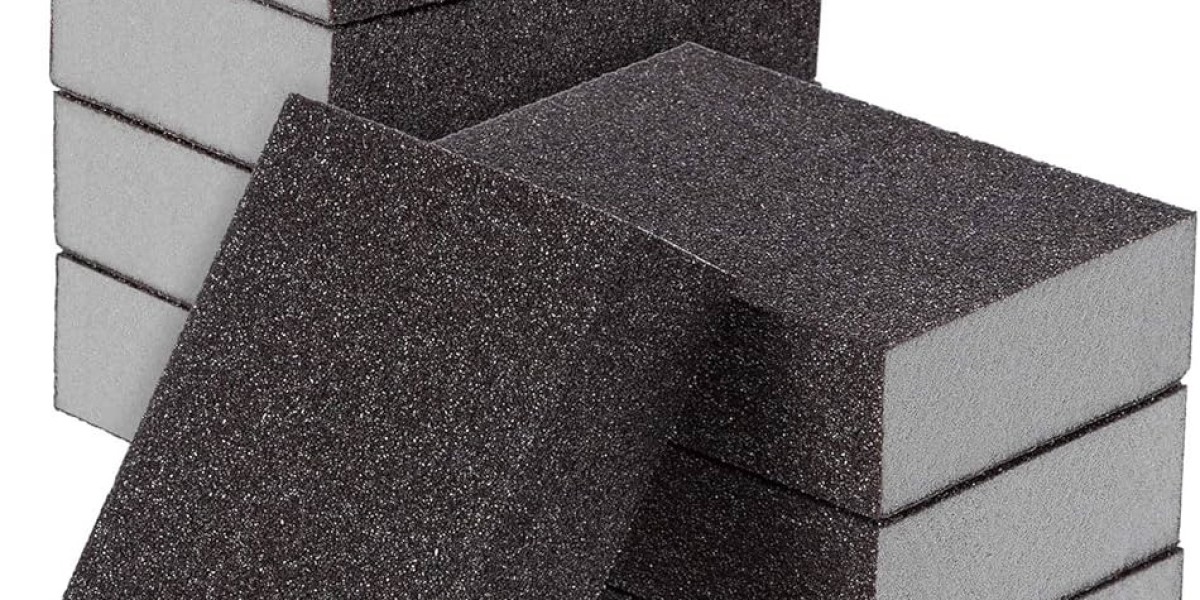Introduction
Sanding blocks are simple hand tools used for sanding surfaces. They provide a rigid backing and uniform flat surface to hold sandpaper securely in place while sanding. This allows for more even and controlled sanding than can be achieved by hand alone. These blocks come in a variety of styles suited for different applications. The main components include a rigid base or panel to serve as the backing, and a method to securely attach sandpaper.
Common Types of Sanding Blocks
Rubber Block
Rubber blocks feature a solid rubber base which provides a soft, non-marring surface that won't damage delicate materials. The soft rubber conforms to curves and corners, making it suitable for light sanding of painted surfaces or finishing work. Rubber blocks are available in a range of basic shapes including squares, rectangles, and flats.
Wood Block
Wooden blocks are a versatile option constructed from a hard wood like poplar or birch. Their sturdy rigid design makes them effective for more demanding sanding tasks like stock removal or shaping. Wood blocks are durable and can take repeated, heavy sanding. Common styles include thicker shaping blocks and thinner finishing blocks.
Foam Block
Foam blocks use a lightweight foam backing material. They offer some flex and cushioning to conform to surfaces while providing a stable platform for sandpaper. Foam blocks work well for smoothing epoxy coatings, glue joints, or other uneven surfaces. Their softness avoids marring in many applications.
Adhesive-Backed Block
Self-adhesive blocks have a reusable adhesive backing which sticks sandpaper directly to the block's smooth surface. This rapid attachment and switching of sandpaper makes adhesive blocks convenient when performing repetitive multigrit wet/dry sanding. However, the adhesive interface may not last as long as mechanical paper clipping.
Using Sanding Blocks Effectively
Proper sanding technique is important to avoid swirl marks or uneven results when using any type of block. Maintain even pressure and sand with the grain in a controlled sweeping motion. Let the sandpaper do the cutting rather than bearing down. Keep blocks flat on the surface.
It's best to sand in multiple light passes rather than deep digging strokes. Raise the block slightly and change direction between passes to help level any high spots. Check for a smooth surface often by running your hand along the area sanded. Change sandpaper regularly once it starts to load up or clog.
For finer surface preparation, a sanding sponge is preferable over a solid block. The compressible sponge conforms closely to the work for truer finishing. Work systematically and sequentially through grits of 120, 180, 240 etc. Always thoroughly clean away grit dust between steps. With care, beautiful satin-smooth surfaces can be achieved.
Using Sanding Blocks for Specific Tasks
Preparation work
Blocks are useful for stock preparation prior to finishing or applying stains, paints and topcoats. Heavier wooden or wrapped rubber blocks can flatten or shape surfaces efficiently at coarser grits around 60-120. Keep the workpiece secure for best control.
Glue joint finishing
Foam blocks are effective for smoothing unwanted bumps from wood glue joints seamlessly into the surrounding grain. Their softness is gentler on joints than stiff blocks as finer grits down to 240 are used. Work the whole joint area evenly.
Paint/stain finishing
For applying paints and stains to pre-finished surfaces like trim work, a soft rubber block offers a convenient tool. Use a high grit pad around 320-400 to smooth any flaws and ensure an even finish coat. Their soft edges work well in corners.
Final polishing
On the final 1-2 steps of finishing, a high quality wood or rubber block provides a slick surface for superfine wet/dry paper grits up to 2000. This burnishes the wood to a silky smooth texture, bringing out maximum luster before applying topcoats. Sand with the grain for a beautifully finished project.
In Closing
Whether the task involves stock prep, glue joint smoothing, paint finishing or burnishing a final polish, the versatile block should be in every woodworker or painter's toolkit. Their stable platform enables efficient sanding tasks to be accomplished with better control and more even results than by hand. Choosing the right style of block for the material and grit being used ensures optimal sanding performance. With a range of block types available, finding the sanding solution for any job is simple.
jack smith
34 Blog posts



